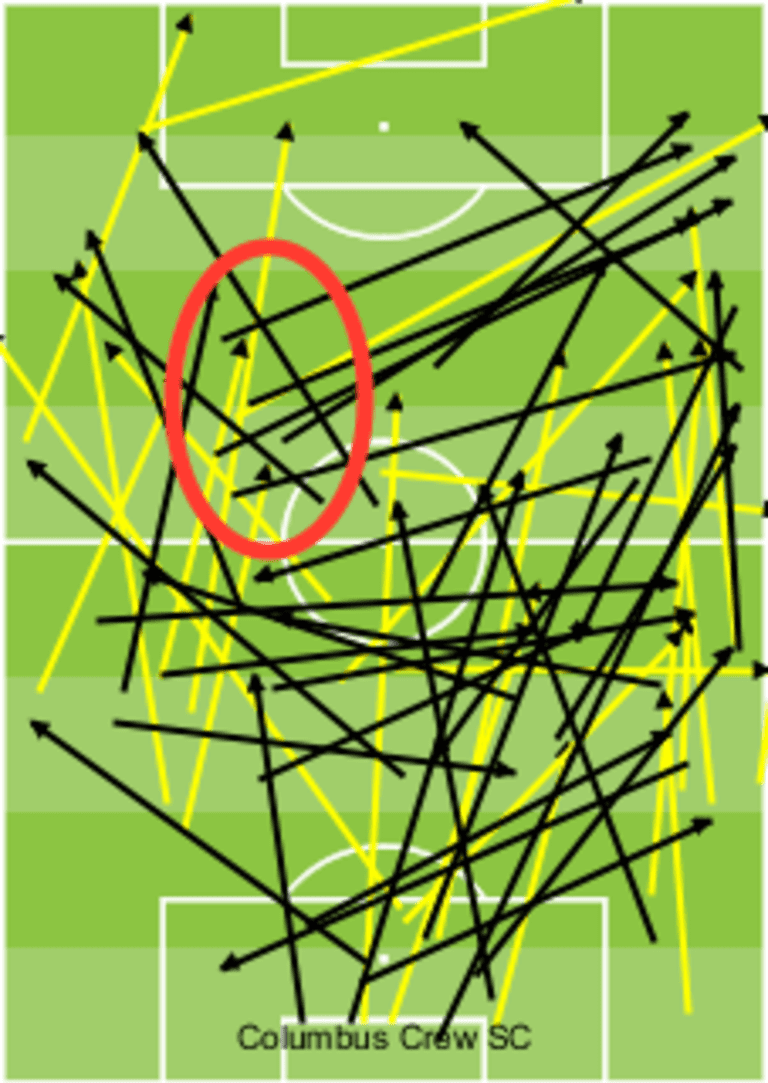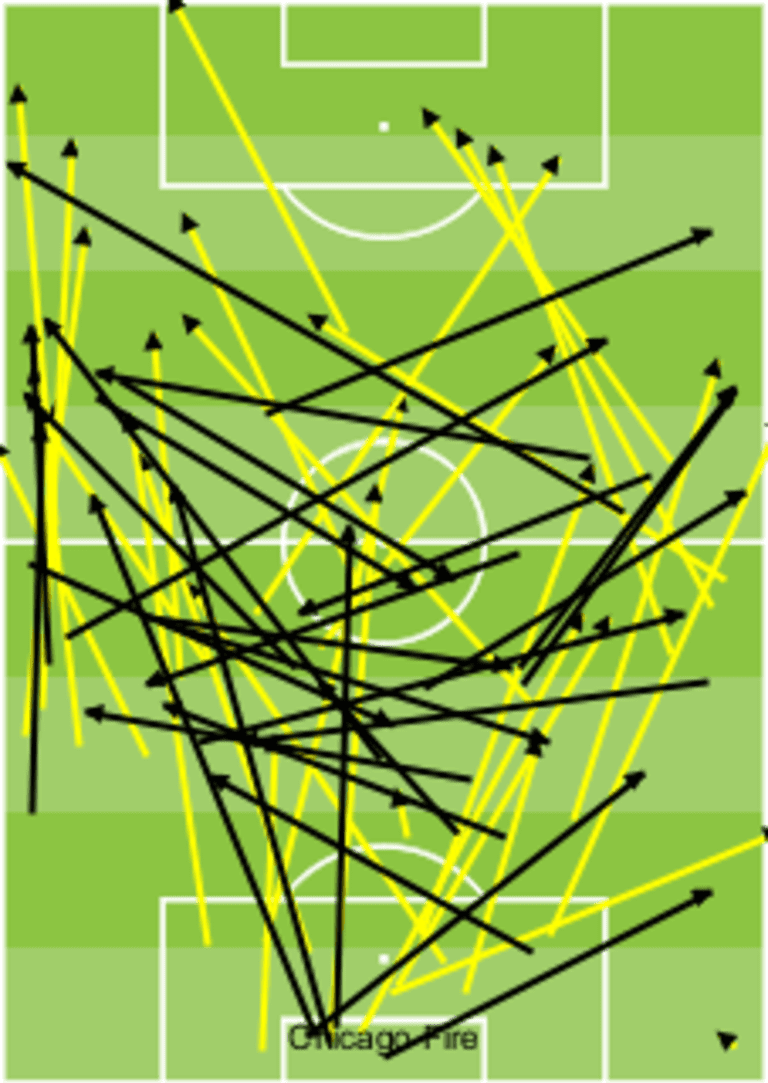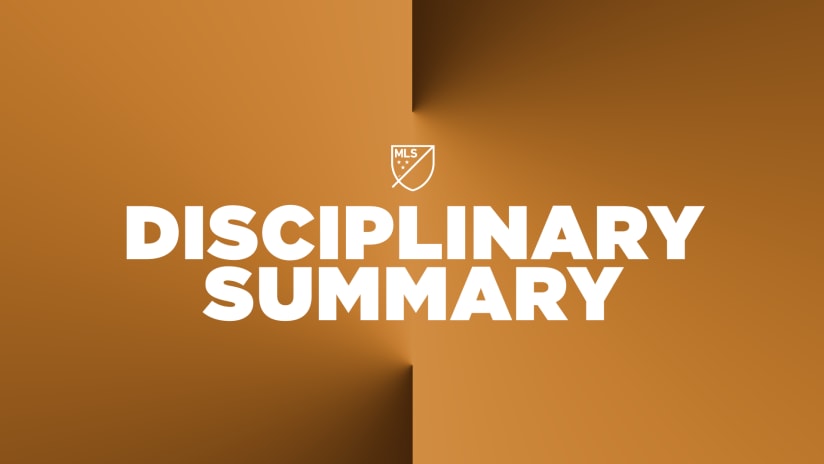This is one of the best pieces of content any MLS club has ever published, and bravo to the Philadelphia Union for that. Everyone should take five or 10 minutes to take a look at the videos and accompanying written explanations, and try to digest as much of it as possible. It's good, and it's smart, and it's way more transparent than I'm used to – than anybody's used to – in terms of getting a look at any given team's game plan and theoretical approach.
The part that most caught my eye was this definition of their pressing cues:
- Straight Pass
- Ball to outside Back
- Negative Pass
- All throw-ins
Vancouver did a good job of spacing themselves squad depth of 41.6 meters out in their build-up play. Many of these pressing cues did not present themselves often. In turn, our defensive backline adjusted and positioned them to protect the space behind, while the midfield unit position themselves to cut out the passing lanes. A pressing tactic in this situation would not be as effective because it would force the Union to essentially run themselves into the ground to win the ball back.
Nothing's shocking about any of this info in and of itself – all 22 MLS teams press on throw-ins, and the vast majority press when the ball is played to either fullback. But it's still damn refreshing to have a team spell out their philosophy for the public like this, and even to include some film to help break it down.
Of the three videos the Union included, I thought the first was by far the most useful:
It illustrated both Philadelphia's spacing, but also the danger in letting goalkeeper Andre Blake distribute, unmolested, to regista Haris Medunjanin. To put it simply: Blake completed only five passes in the second half, and four of them were long balls. The one time Medunjanin was able to receive a pass on the ground directly from Blake, he immediately forced an overload on one side, then directed play toward the other for a 10-pass build up that led to a shot on goal.
If I were game planning against Philly, I'd sell out to prevent easy distribution to Medunjanin's feet (duh – nobody in the league needed to see the tape to know that, so it's not like the Union really revealed state secrets here). If he's on the ball you've got to cut out half the field, and for the most part Vancouver were really good at this last Sunday. When they weren't really good at this, the Union were able to turn possession into danger.
One other note from the above sequence: Derrick Jones had a very good MLS debut, but I want to see him be a little braver with touch No. 6.
All teams have access to the wide angle, tactical view cameras that produced the above, and have for years, so they'll have already seen these sequences. They'll also have dug up some more revealing ones from other parts of the game or from parts of last season. Toronto FC, who play at Philly on Saturday (4:30 pm ET; MLS LIVE in the US | TSN4 & TSN5 in Canada), have one of the more sophisticated scouting departments in the league, so it's a safe bet that they'll have been well-prepared irrespective of this piece's publication.
Still, I'm excited. Philly did something very cool by spelling a few relatively basic things out like this, and their fanbase should be grateful for that.
I'll also be watching: The connection between Sebastian Giovinco and Jozy Altidore. It wasn't particularly great in MLS Cup, and it wasn't great in Week 1's scoreless draw at RSL.
Of Course
I said it on Sunday: Nobody had a more disappointing result from the opening weekend than Columbus, who could only manage a 1-1 draw at home against Chicago. It was the same old Crew SC in the bad way – conceding late, point-dropping goals after mostly being the better team.
It was also the same old Crew SC in the good way, as they were able to generate a ton of useful possession and good chances by swinging the ball from side to side and pushing both fullbacks way up the field. When Columbus are in possession and the fullback really pushes, it opens up the flank for a long diagonal (the type described in that Union analysis above), and Crew SC complete those passes at a league-best percentage.
Here's their long-ball map from the game against the Fire:

Black arrows are completed passes, yellow incomplete. They attempted six left-to-right long-balls from that spot on the pitch I highlighted, all of them to right back Harrison Afful. They completed five, and on the day completed 58.6 (34 of 58) long-balls. This is not a surprise, as Columbus have led the league in long-ball accuracy since Gregg Berhalter arrived, and ruthlessly spread the field with a purpose. In all I count 10 final third entries via long-ball, and eight of those were on field-tilting, defense-ripping diagonals.
For reference, here's Chicago's map from the same game:

They actually attempted more long-balls, and completed them at a decent clip – 32-for-65 (49.2 percent) isn't bad, and is a big improvement over last year's dire, league-worst 41.6 percent completion rate.
But the map's very different, right? I see only two final third entries via long balls, and far fewer diagonals that can force teams to defend the whole width of the field. Chicago were scrambling the ball out of danger more often than not, while Crew SC were playing it into their own strengths.
Columbus will head to Houston on Saturday (8:30 pm ET; MLS LIVE) and again do what they did last week, which is what they've been doing for years, which is what they will continue to do for as long as Berhalter is coach, I suspect.
The job now is to turn more of those chances into goals. Columbus have their pattern down to a science, but the last step has eluded them for the last 12 months.
I'll also be watching:Eric Alexander as a game-controlling No. 6 for the Dynamo. He was excellent moving the ball around in last week's 2-1 win over Seattle, but needs lots of protection from Ricardo Clark and Alex.
Suffer Some
Atlanta United pretty conclusively won the preseason messaging war, signing some of the brightest young talents out of South America and putting out a pretty dizzying array of 25-and-under talent on opening day. It nearly worked, too, as they were the better team against the Red Bulls for 70 minutes.
Then it all fell apart in the final 20 minutes, after New York switched to a 4-1-3-2 that was kinda sorta a 4-1-4-1. The formation is less important, though, than the fact that Atlanta simply couldn't figure out how to keep track of Daniel Royer once he went inverted:
Long clip but worth watching. @ATLUTD had a ton of trouble tracking Royer after #RBNY switched formations. pic.twitter.com/48B0dQG89o
— Matthew Doyle (@MLSAnalyst) March 10, 2017
The first time Royer pops up in that clip, center back Leandro Gonzalez Pirez is stepping off the line to check him. The second time, Royer is pushing the entire Atlanta backline deeper with a direct run – the pass never comes, but by making that run, he helps break Atlanta's pressure and gives the rest of the team a little bit of breathing room. The third time he's finding a pocket of space between Carlos Carmona and the backline, and the fourth time he's making a run into the box that would've been dangerous as hell if Derrick Etienne had weighted his slip pass a little better.
Literally seconds later, Royer was an integral part of everything that led to the equalizing goal.
Atlanta will have to learn how to adjust when opponents change shape and tactics. That they didn't in Week 1 shouldn't be surprising, since they're an expansion team, and expansion teams by definition lack chemistry and on-the-fly cohesion.
The good news for Atlanta? This Sunday they're on the road facing fellow expansion side Minnesota United FC (5 pm ET; ESPN2), and the Loons were even less organized in Week 1.
Everybody suffers in MLS, even after winning the offseason. Learning from it is what helps you when in the season itself.
I'll also be watching: Minnesota's midfield intent. I think that in order to be dangerous they need to get a pure attacker into their trio, but when they did so against Portland, their defensive shape fell apart. It'll be a tough balance to strike, especially against a quick-hitting, high-pressing team.
One more thing to ponder...
Keep practicing. Happy weekending, everybody.













